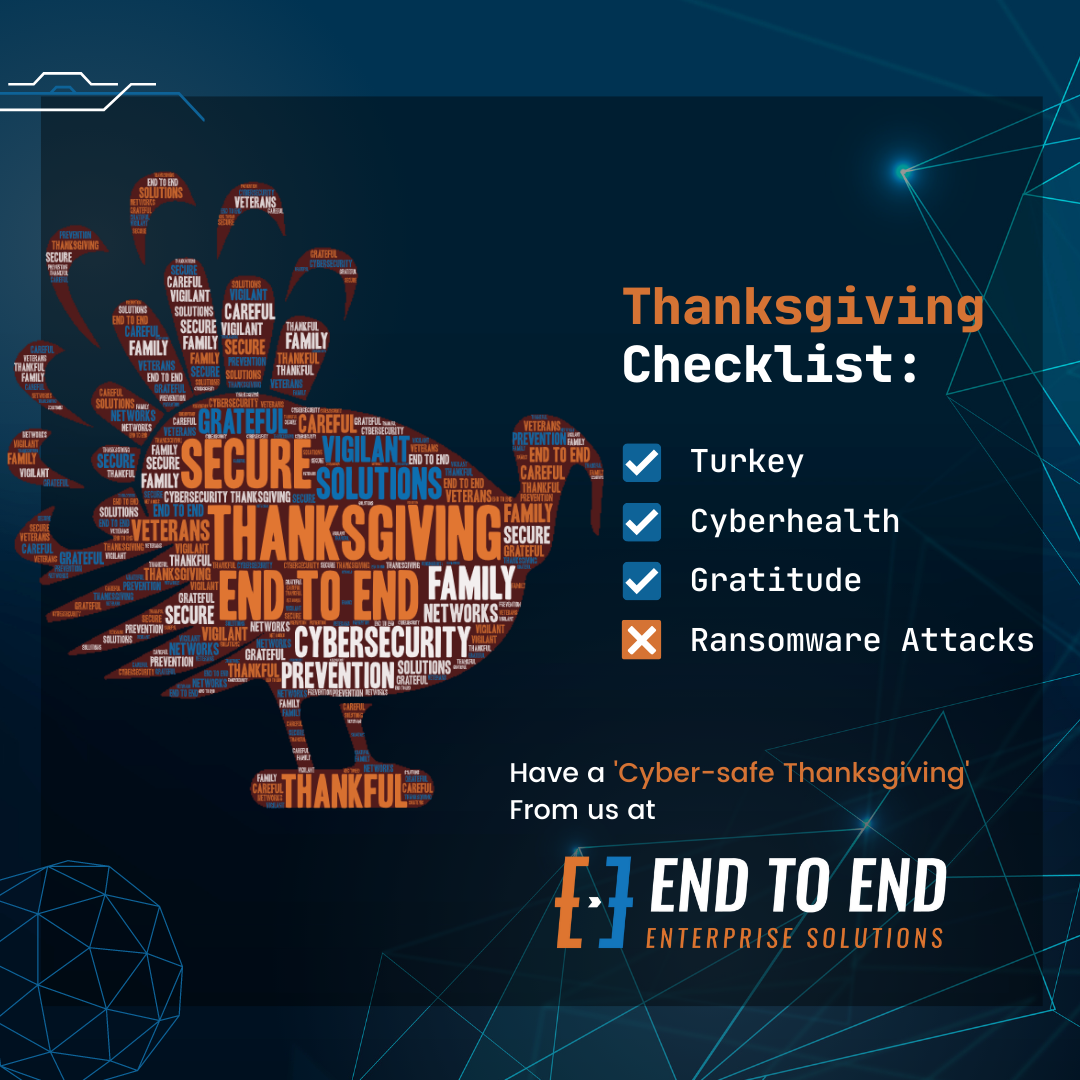At End to End Enterprise Solutions, we are specialists in Cybersecurity and AI development and services; we believe we have a duty to fully synchronize the two disciplines as we plan and secure our clients’ cyber posture so that the actions are more efficient and cost-effective.
Our methodology has emerged as a differentiator, reflecting the types of technological synergies we bring to the table as we pitch our capabilities. Our approach is to coach/advise C-suites that there is a set of essential actions they should understand and implement as they map a Cybersecurity strategy to support their AI strategy. The benefits of these actions empower Industry 4.0 initiatives by streamlining AI-Cyber synergies and optimizing their investments in AI, their operations and enhancing plant efficiency where applicable, resulting in maximum protection against cyber and digital threats.
Background Analysis
AI-Cybersecurity Integration is acknowledged as the best path of protection: The increasing complexity and frequency of cyber threats, some caused by the increased threat landscape that AI brings, require advanced defenses beyond traditional methods. AI and cybersecurity must work in tandem to detect, prevent, and mitigate threats proactively. AI’s ability to analyze vast data sets and identify patterns makes it an invaluable tool in enhancing cybersecurity measures.
The current trends lean towards increased Enterprise investment in AI for predictive analytics, automation, and operational efficiencies. However, this expansion also broadens the attack surface, therefore, understanding how AI can both mitigate and introduce risks is critical in formulating an effective cybersecurity strategy that aligns with AI initiatives.
Keeping this risk landscape in the foreground of planning and strategy as companies budget and develop action plans will help. Organizations often zero in on AI’s benefits without fully appreciating the cyber risks associated with AI adoption, such as adversarial attacks, data poisoning, and model theft. A comprehensive cyber environment analysis and real time overview is essential to understand these threats and establish a synchronized AI-Cybersecurity approach.
Cyberthreat Analysis- Essential to Sound Mitigation Strategies
- Understanding emerging and evolving threat vectors helps to shape robust AI models resistant to such exploits. This is important because AI technologies can be targeted by specific cyber threats such as adversarial AI, where attackers manipulate machine learning models, or data poisoning, where training data is deliberately corrupted.
- Attention to insider threats and data security is a key step for AI systems that often rely on sensitive data, making them prime targets for insider threats. Rigorous access controls, Continuous Monitoring (CM), and anomaly detection using AI can help mitigate these risks. Combining these with a comprehensive dashboard enabled by a SOC Platform such as Singularity-IT, customized with AI integrations suitable to your business can raise the level of CM.
- It is imperative that c-suite acknowledges that there will be vulnerabilities in AI Models that attackers may exploit, and plan for these contingencies by hiring the correct inhouse talent or contractors and including a budget that enables software and monitoring to enhance the proactive mitigation. One simple example is the fact that AI-driven decision-making can be biased or manipulated, potentially leading to compromised security outcomes. Regularly auditing AI models for security flaws is crucial.
Solutions
Getting a cybersecurity partner that builds the right solutions will raise the bar of your enterprise’s cyber posture. Here are three non-negotiable build-ins that must be implemented:
- Adopt AI-Driven Threat Detection and Response: AI-enhanced cybersecurity solutions such as User and Entity Behavior Analytics (UEBA) and Extended Detection and Response (XDR) systems use machine learning to detect anomalies and predict potential threats. These tools enable faster and more accurate threat detection, minimizing response times and reducing the impact of attacks.
- Implement Zero Trust Architectures with AI Monitoring: AI can enhance Zero Trust models by continuously verifying user identities and device integrity. AI-driven monitoring tools can help in real-time detection of unauthorized access or suspicious activities, ensuring a dynamic security posture.
- Data Encryption and Privacy-Preserving AI: Deploy AI models that respect data privacy, such as federated learning, which allows model training across decentralized data without compromising sensitive information. This approach is crucial for industries dealing with extremely sensitive data, such as healthcare or finance.
Getting it Done!
Strategies can make a difference to improvements you see, the money saved and more importantly your own Cyber-Resilience.
- Systematically develop an AI-Cybersecurity Governance Framework by establishing governance structures that define the ethical use of AI, set security standards for AI models, and ensure compliance with regulatory requirements. This framework should include regular audits and risk assessments tailored to the specific needs of AI-driven environments.
- Embrace an Agile Security Approach immediately. Use DevSecOps practices to integrate security into every phase of AI development and deployment. There is no way to avoid the reality that cybersecurity threats evolve rapidly, and AI systems must be agile and adaptable. Continuous integration and continuous delivery (CI/CD) pipelines with security checkpoints ensure that AI models remain resilient against emerging threats.
- Focus on AI Explainability and Transparency, this is not just for the academics. Ensure your contractors grasp the full extent of AI models, especially those used for cybersecurity since these should be transparent and explainable. This allows them to coach your in-house cybersecurity teams and to add value to the decision-making processes of AI, improving trust and ensuring models behave as expected, even under attack.
Elements of Agility and Efficacy Analysis
The posture of adaptability to new threats is an action item, not just empty chatter. AI’s adaptive learning capabilities allow cybersecurity solutions to evolve alongside new threats. It therefore helps, if enterprises work with contractors to prioritize agility in their AI and cybersecurity integration to remain ahead of sophisticated cyber adversaries.
Insist on actionable balancing of innovation with security because innovation with AI should not come at the expense of security. This strategy ensures that AI-driven advancements do not introduce vulnerabilities and should be ingrained in written policy that directs regular assessment of AI deployments, keeping agility in mind to quickly adjust strategies in response to new challenges. As companies scale, this become important- for example, smart technology implementation, new software, plant machinery, the adoption of metaverse strategies for training and continuous monitoring as well as condition based maintenance all should be balanced with the appropriate cybersecurity implementations.
Continuous Learning and Threat Intelligence Integration: AI systems should be integrated with threat intelligence feeds to continuously learn from new threat data. This approach allows AI models to refine their responses, improving overall cybersecurity resilience. Regular updates and model re-training are necessary to maintain effectiveness. Again, if this happens in a metaverse environment, the integrations become even more urgent. By addressing these considerations, E3S can help enterprises develop a cohesive strategy that maximizes AI’s potential while maintaining a robust cybersecurity posture. This approach not only mitigates current cyber threats but also ensures long-term security in a rapidly evolving digital landscape.





